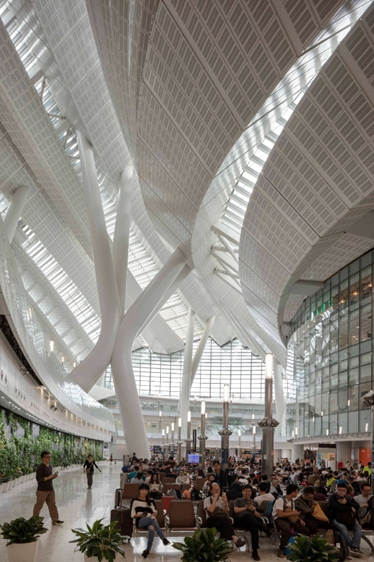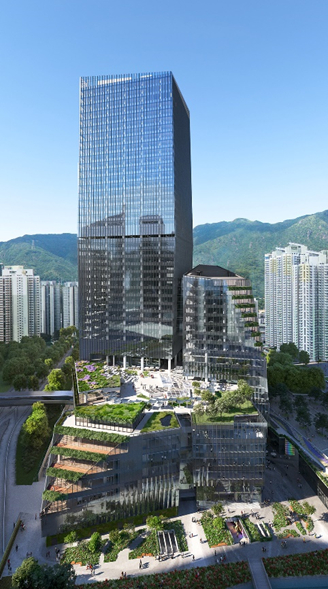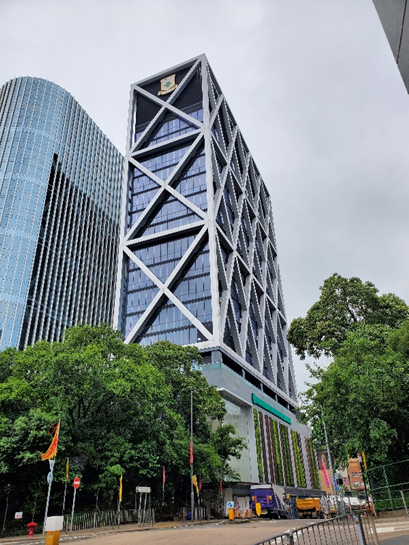Nowadays in Hong Kong, the designs of buildings are changing rapidly with each passing day in order to fit today’s environment. For example, when designing fire protection for buildings, with special features like large atriums or deep basements, fire engineers must consider all-in-one fire safety design solutions, based on their professional knowledge and experience, that matches the aesthetics of the buildings. The fire safety designs of most buildings in the past were “designed in place”, that is, they were designed and installed in accordance with the prescribed codes of practice and there was less room to play with.
When the design of the building itself is complex, the fire engineer has to develop an overall fire safety protection plan to achieve an equivalent or better level of fire safety as prescriptively required for the building. This is a Performance-based Approach which is generally recognised as the Fire Engineering Approach (FEA) for the fire safety design of buildings.
The Fire Division of The Hong Kong Institution of Engineers (HKIE) recently held the “Fire Engineering Excellence Award 2022”, in the hope of arousing the industry to address fire safety concerns, and becoming a platform for peers to exchange and promote their design experiences in fire safety engineering. The award recognises the contribution of fire engineers and is used to enhance the professional level and status of the industry.
This was the second time the Award has been held. The first time was back in 2019. The judging criteria for “Building Projects” focussed on innovation in fire safety design and features, in conjunction with buildings and structures, sustainable development, manageability and aesthetic harmony; while “Research and Development” focused on the relationship between relevant research and the application of fire engineering, and in the creation of excellent performance in theoretical background and sustainable development.
Ir Professor Daniel Lo, the Chairman of Fire Division of the HKIE, said that the projects shortlisted for the Excellence Award this time were all academically sound and demonstrated a very high level of professionalism. The Hong Kong West Kowloon Station (see Figure 1), which won the award, was well deserved. In designing the fire protection for the station, it was necessary to take into account not only the functional requirements of the railway station, but also the operation of the cross-border security facilities.
Fire engineers also had to consider passenger convenience in designing the fire safety provisions. In addition, the large 3-dimensional space in the atrium of the station is a very complex design with a special structure. Its upwardly-curved triangular roof structure with a number of simple and extra-large steel trees supporting the entire roof is functionally and aesthetically pleasing, providing travelers with a safe and modern environment. It also forms a natural smoke exhaust system.
Ir Leung Kwun Hong, Chairman of the Organising Committee of this year’s Fire Engineering Excellence Awards appreciated the innovative fire engineering design of the Hong Kong West Kowloon Station. The station is a complex and multi-functional building with many facilities including an underground station, ticketing and immigration halls. The fire engineers also had to develop a fire safety strategy to address the large open spaces of the station concourse which presented a lot of challenges, such as how to effectively discharge the smoke and fumes and how to allow the public to escape safely.
The design team took advantage of the high headroom of the building to solve this problem by using static smoke extraction. The fire engineers estimated the amount of smoke that might be generated if a fire occurred, and then simulated the smoke movement with computer modelling. When a fire is detected by the flame detection system installed in the station, the smoke vents in the roof will immediately open to discharge the smoke and activate the fire alarm system. The efficiency of the fire alarm can only be achieved when the public’s escape situation has been fully considered. The fire engineers needed to fully master all kinds of fire equipment to achieve the overall design goal and ensure public safety.
Another two building projects, AIRSIDE and the Hong Kong Eastern District Advanced Medical Centre, were awarded the Commendation Merits. AIRSIDE (see Figure 2) is a 1.9 million sq. ft. mixed-use commercial development in Kai Tak. It includes a Grade-A office and a multi-storey retail complex, surrounded by lush greenery covering 33% of the site area to improve the neighbourhood and enhance people’s wellbeing.
The fire engineer for the project had been involved right from the scheme design stage till the end of completion. Unique fire engineering solutions were adopted to address AIRSIDE's huge atrium and deep basement and ensure fire safety using a smoke extraction system, long-throw sprinklers and flame detectors. The continuous fire engineering support throughout all the work stages by different parties demonstrated a high standard of multi-disciplinary co-ordination and collaboration. The project team successfully achieved a seamless integration of commercial and architectural aesthetics and fire safety for this new landmark.
The Eastern District Advanced Medical Centre (see Figure 3) is a new medical hub providing high quality community-centric care and a multi-disciplinary programme for cancer care and ambulatory treatment. It includes the Proton Therapy System, which is the newest and a first-in-Hong Kong technology for cancer treatment.
Its ancillary facilities are exceptionally large and heavy, and are located in the basement levels. A lot of fundamental fire engineering principles were applied in this project. For example, fire risk was reviewed to identify the worst possible fire scenarios by considering the usage and operation procedures of the basement. Human factors such as the disability of the patients and their need for staff assistance were considered in the evacuation analysis. Due to the spatial constraints, the duct shafts / risers from the essential services could not pass through the Proton equipment room or the Proton supporting plants, the smoke control system had to be carefully designed and optimised through a fire engineering approach to find a balance between fire safety protection and constructability.
This is one of the recent projects where fire engineers have continued to provide technical advice and support to the contractor to make sure that the fire engineering solutions were sound and properly carried out.
Last but not least, the Qianhai Station and Transportation Hub and the Heung Yuen Wai Boundary Control Point Passenger Terminal Building were granted Finalist Awards. Both projects have demonstrated the wisdom of applying fire engineering approaches to directly resolve the fire safety issues of the buildings.

Figure 1: Winner of the Grand Award: The Hong Kong West Kowloon Station

Figure 2: Winner of Commendation Merit: AIRSIDE at Kai Tak Area 1F

Figure 3: Winner of Commendation Merit: The Eastern District Advanced Medical Centre at A Kung Ngam Village Road



